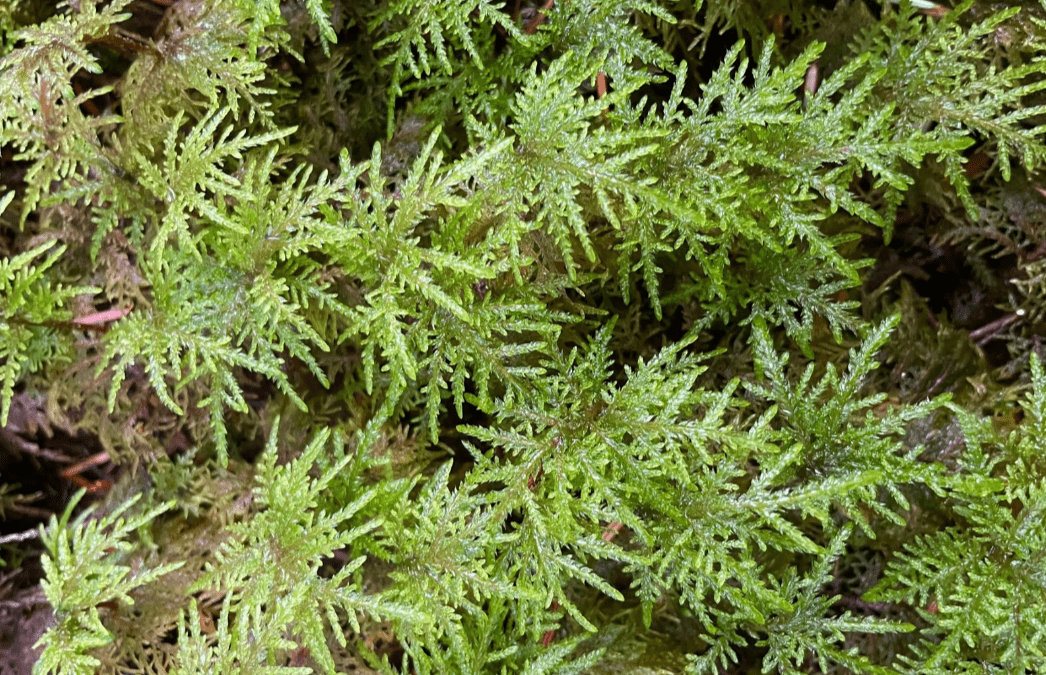The first plants to adapt to life out of water were Bryophytes, plants that reproduce via spores and have no circulatory system: the mosses, liverworts, and hornworts. These amazing little plants have no roots, but they may have rhizoids to anchor them to their substrate, be that soil, living trees, or rock. They lack the structures of true plants, which are able to transport nutrients and water throughout their tissues. Instead, Bryophytes exist as a connected mass of single cells, each one converting sunlight into carbohydrates through photosynthesis. Because they have no roots, they obtain all of their nutrients and hydration through the leaf itself, and they are remarkably well adapted to being dried out in summer. They simply go into dormancy, shriveling up until rains return and they can perform all of their functions again. Over 30 species have been identified in Shadow Lake Bog, but there are over 700 species in the Pacific Northwest.
It isn’t too difficult to tell a moss from a true plant, although some species do look like little trees. There are over thirty species of moss in Shadow Lake Bog alone, in several different families. There are also liverworts, little plants that have a similar habit to mosses, but are built differently. They tend to be arranged in flattened, overlapping leaves on either side of a stem-like structure. The most common Liverwort at SHADOW is Tree Ruffle, and it can be found in lush layers on tree trunks, but there are over 150 species in the Pacific Northwest. The next time you’re out and about, look closely and see how many different colors and textures of Bryophytes you can spot!



Recent Comments